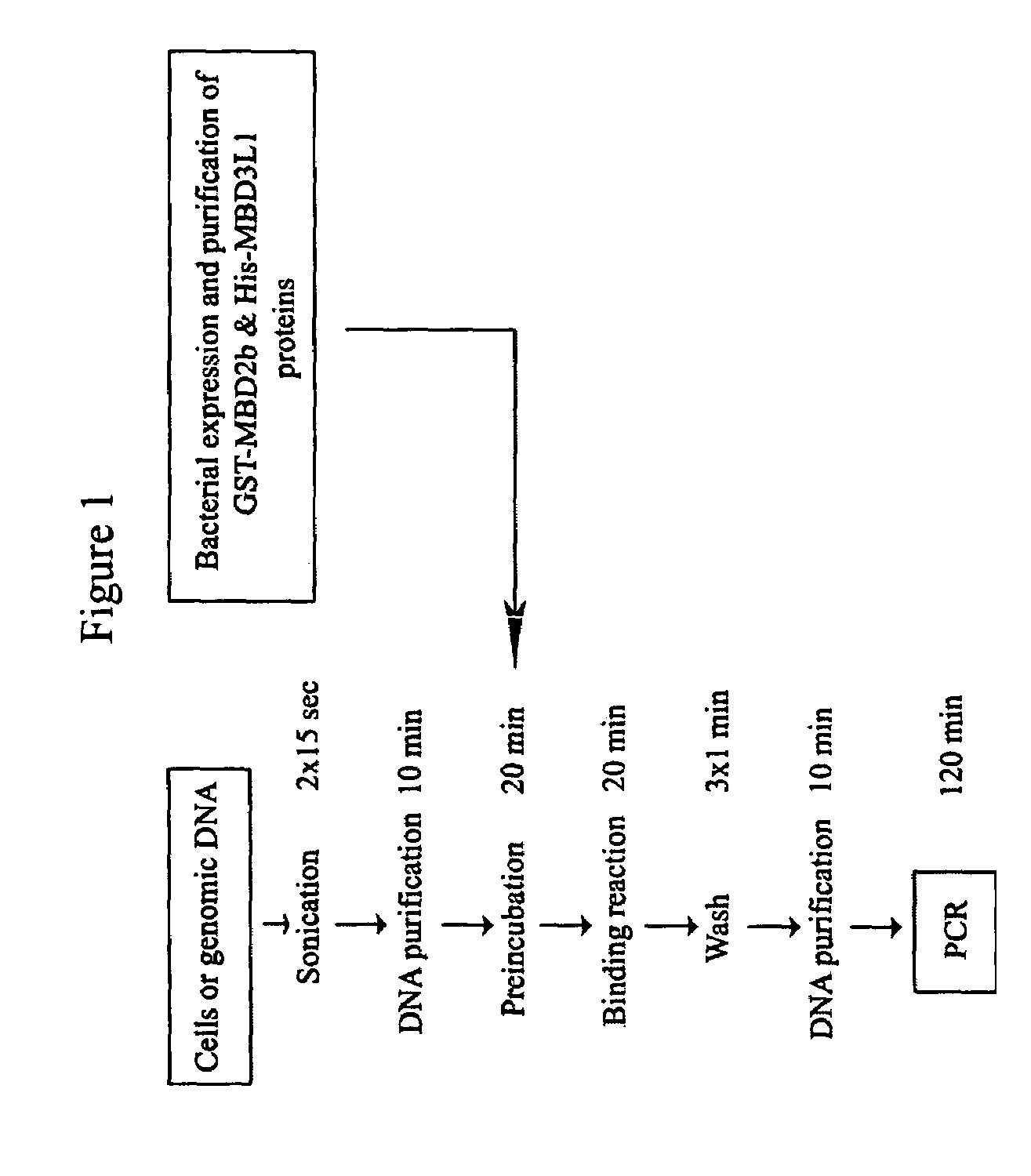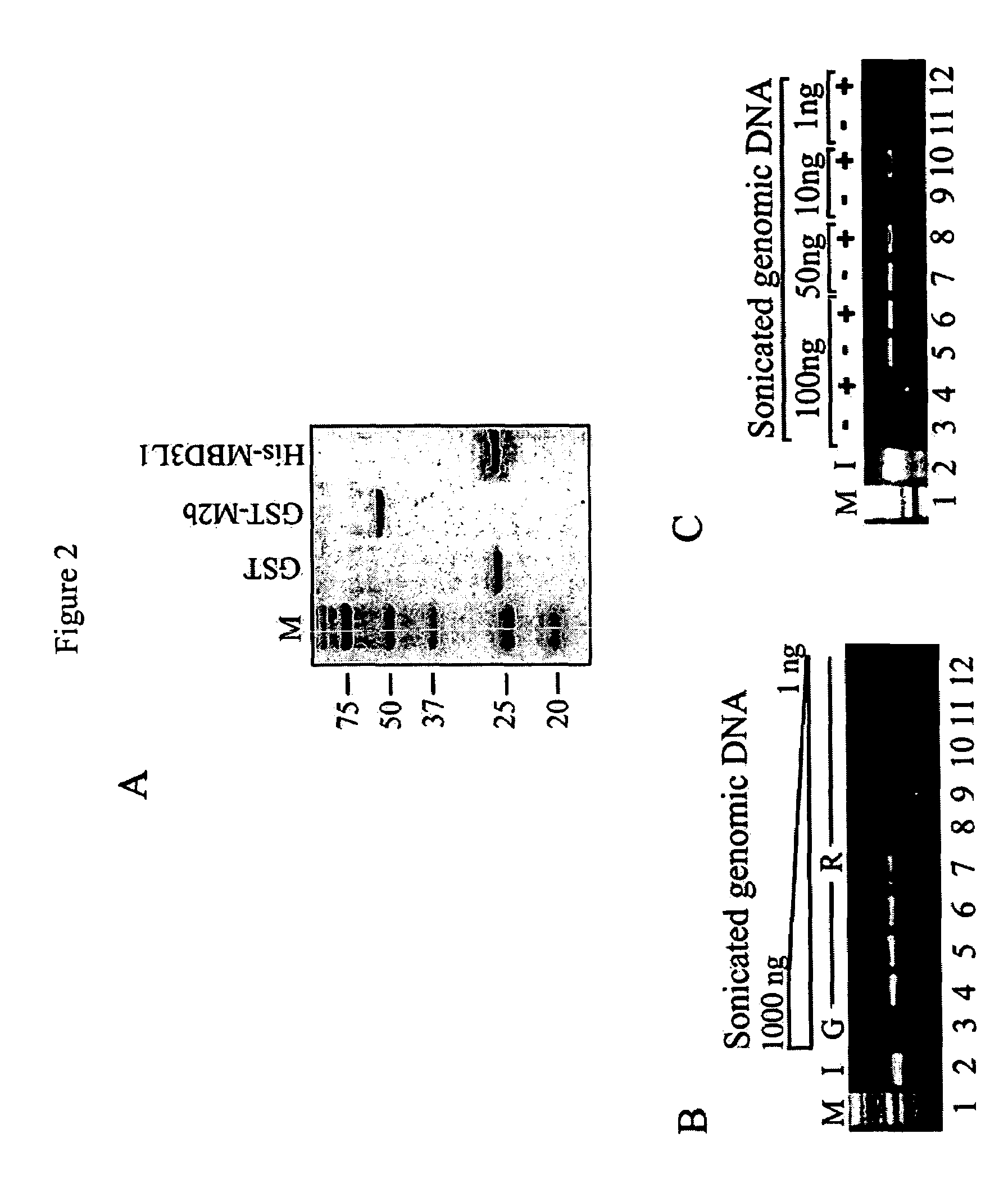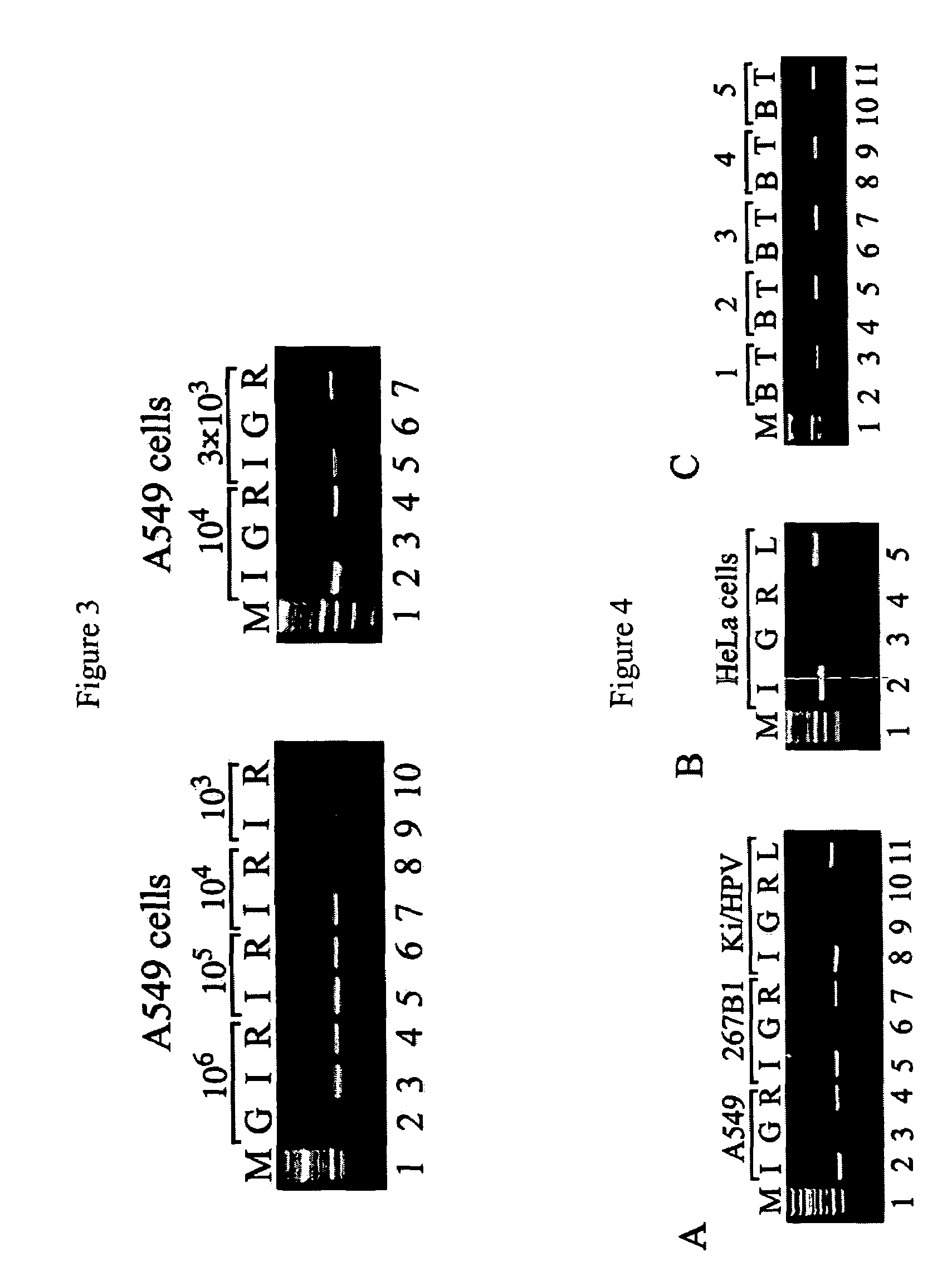Method for detecting methylated CpG islands
a methylation and methylation technology, applied in the field of methylation cpg islands detection, can solve the problems of large amounts of genomic dna, limited techniques to specific restriction sites, labor-intensive methods, etc., and achieve the effect of altering cpg methylation patterns
- Summary
- Abstract
- Description
- Claims
- Application Information
AI Technical Summary
Benefits of technology
Problems solved by technology
Method used
Image
Examples
example 1
Materials and Methods
[0071]Plasmid Constructs and Protein Expression
[0072]For the expression of GST-tagged recombinant MBD2b protein, the RT-PCR-generated full-length cDNA was cloned into the pGEX-5X-1 expression vector (Amersham Pharmacia Biotech). The His-tagged MBD3L1 protein expression vector was constructed as described earlier (Jiang et al., 2004). Expression constructs were transformed into E. coli BL21(DE) and expression was induced with 0.5 mM IPTG for 4 hours at 37° C. Bacterial pellets were resuspended in ice-cold STE buffer (10 mM Tris-HCl pH 7.8, 150 mM NaCl, 1 mM EDTA) containing 100 μg / ml lysozyme. After 10 min incubation on ice bacteria were lysed by addition of 1.5% of N-lauroylsarcosine (final concentration) and sonicated three times for 1 min. The lysate was cleared by centrifugation and Glutathione Sepharose 4B (Amersham Bioscience) or Ni-NTA His-Bind® Resin (Novagen) was added. Glutathione beads were washed three times with ice-cold PBS and resuspended in storag...
example 2
Methylated-CpG Island Recovery Assay (MIRA)
[0079]The methyl-CpG island recovery assay (MIRA) was developed as a GST pull-down method in which bacterially expressed and solid phase bound recombinant MBD2b protein is incubated with sonicated total genomic DNA. After washing of the beads with high salt buffer and elution of bound DNA, a gene-specific PCR reaction is performed on the isolated fragments to detect the recovered CpG islands (FIG. 1).
[0080]From recently published studies it is known that MBD2b possesses one of the highest affinities for methylated DNA among the MBD proteins (Fraga et al., 2003). MBD2b interacts with MBD3L1 and this interaction further strengthens MBD2b's binding affinity for methylated templates (Jiang et al., 2004). The MBD3L1 interaction domain was mapped to the C-terminal end of MBD2b, and therefore the full-length MBD2b protein and not just the MBD domain was used in the MIRA procedure. Methyl-CpG column chromatography has already proven that the MBD of...
example 3
Testing of the Binding Capacity of the MIRA Matrix
[0089]Testing of the Binding Capacity of the MIRA Matrix
[0090]MIRA analysis was performed on 500 ng of input DNA after mixing 375, 250, 125 ng, and 0 ng of A549 DNA with 0 ng, 125, 250 and 375 ng of HeLa DNA, respectively. Supernatant fractions were concentrated using Qiaquick column (QIAGEN) according to the manufacturer's instructions. One μg of sonicated herring sperm DNA was added to the isolated DNA samples and these were treated with sodium bisulfite (Herman et al., 1996). The bisulfite-modified templates were monitored by methylation-specific PCR. For methylation-specific PCR analysis of the RASSF1A promoter the following primer pairs were used: METFor: 5′-GGGTTTTGCGAGAGCGCG-3′ (SEQ ID NO:6) and METRev: 5′-GCCCCAATACTAAATC ACGACG-3′ (SEQ ID NO:7); UNMFor: 5′-GGGGTTTTGTGAGAGTGTGTTTAG-3′ (SEQ ID NO:8) and UNMRev: 5′-TAAACACTAACAAACACAAACCAAAC-3′ (SEQ ID NO:9).
[0091]Bisulfite Sequencing Analysis
[0092]MIRA was performed on pre-mix...
PUM
| Property | Measurement | Unit |
|---|---|---|
| pH | aaaaa | aaaaa |
| temperatures | aaaaa | aaaaa |
| pH | aaaaa | aaaaa |
Abstract
Description
Claims
Application Information
 Login to View More
Login to View More - R&D
- Intellectual Property
- Life Sciences
- Materials
- Tech Scout
- Unparalleled Data Quality
- Higher Quality Content
- 60% Fewer Hallucinations
Browse by: Latest US Patents, China's latest patents, Technical Efficacy Thesaurus, Application Domain, Technology Topic, Popular Technical Reports.
© 2025 PatSnap. All rights reserved.Legal|Privacy policy|Modern Slavery Act Transparency Statement|Sitemap|About US| Contact US: help@patsnap.com



